
Multimodal Facilitator for Circular Economy in Fashion Industry
Capsule Closet
2022
CONTEXT
Design Studio II
Dexign Signals from Noise
Carnegie Mellon University
Spring 2022 (12 Weeks)
TEAM
Anupriya Gupta
Ivar Dameron
Yeonjin Park
Shih-Hsueh Wang
Advised by Peter Scupelli and Kristin Hughes
ROLES
Exploratory Research
Generative Research
Evaluative Research
Interviewing
Workshops Facilitating
Framework
Wireframing
Prototyping
Demo Building
TOOLS
Figma
Procreate
Adobe Photoshop
Overview
Capsule Closet is a clothing management platform, powered by data analytics to help people practice a mindful lifestyle that encourages reducing carbon footprint.
The project aims to drive a circular economy in the fashion industry to our society in order to reach zero carbon by 2050. In that regard, our team implemented a breadth of research methodologies that span from exploratory to validation, framing the problems that our target audiences, Generation Z, who will be mainly driving the development in the near future, most resonate with and are impactful about. Given the results from questionnaires, interviews, and workshops, we proposed solutions, including a mobile app, smart tags, and smart mirrors, that can launch in different years along with the evolution of society.
Capsule Closet targets to transform the social and peer pressure that commonly exists among Generation Z into an encouragement of prolonged use of clothes and revelation of the clothing industry with a carbon-neutral system. Ultimately, people will buy less, choose well, and make it last.
Concept Video
Design Objective -
"Buy less, choose well, make it last."
-
Embed sustainable fashion practices in one’s identity
-
Balance style and quality when shopping
-
Make sustainability a trend in social context
-
Empower customers to effect change
Problem Statement -
How might a shift in the mindset of Generation Z, encourage prolonged use of clothes within a circular economy, and transform the clothing industry to a transparent, carbon-neutral system?
Fashion brands overproduce garments and consumers shop for clothes more than any other time in history.
Garment workers at a factory in Bangladesh.
Photo: Ahmed Salahuddin/NurPhoto via Getty Images

The fashion supply chain is a complex global system of industries that produce
2.3 billion tons of carbon emissions
Discarded clothes in the Atacama desert, Chile.
Photo: Martin Bernetti/AFP/Getty Images

Design Solution -
It's a personal clothes curator, sustainability strategist, and circular economy agitator.
What is Capsule Closet?

It came from a lifestyle that collecting clothes mindfully that create versatile and long-lasting styles for a person.
-
It minimizes the unnecessary purchase and hoard of clothing
-
A mindset switch that makes clothing people own has a purpose
-
People buy better quality clothes to use longer
-
People own less clothing, but more outfits

We proposed a system that incorporates three types of mediums situated in multiple scenarios in dealing with different problems with corresponding features.
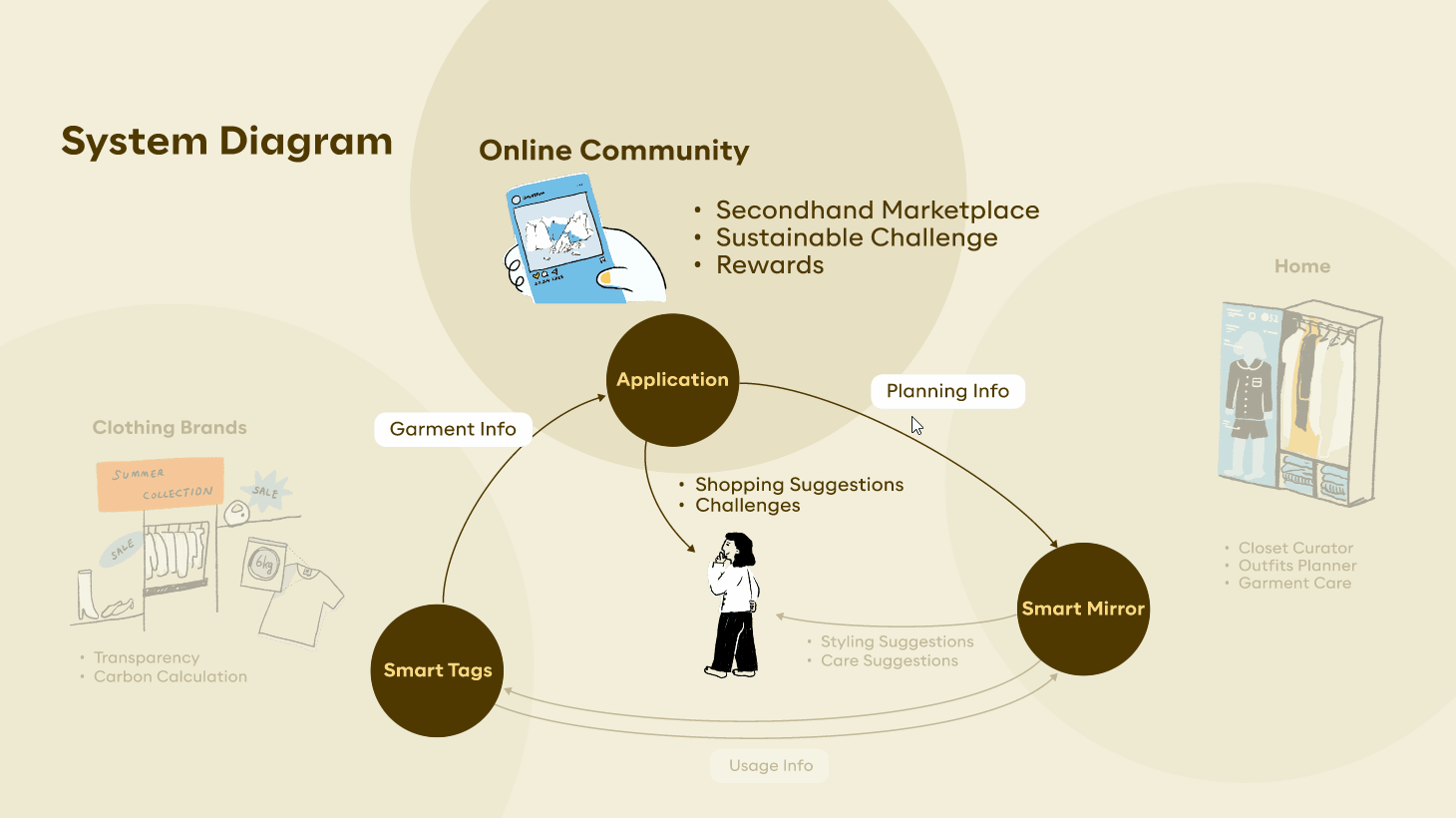
The user flow articulates the holistic workflow between each functionality from a user's view of point. All the functionalities are embedded to respond to user's needs and visions collected from our research. During the constraint timeframe, we worked on three main features - Closet Curator, Challenges, and Exchange Market, and created High-fidelity prototypes and live demo.

Capsule Curator
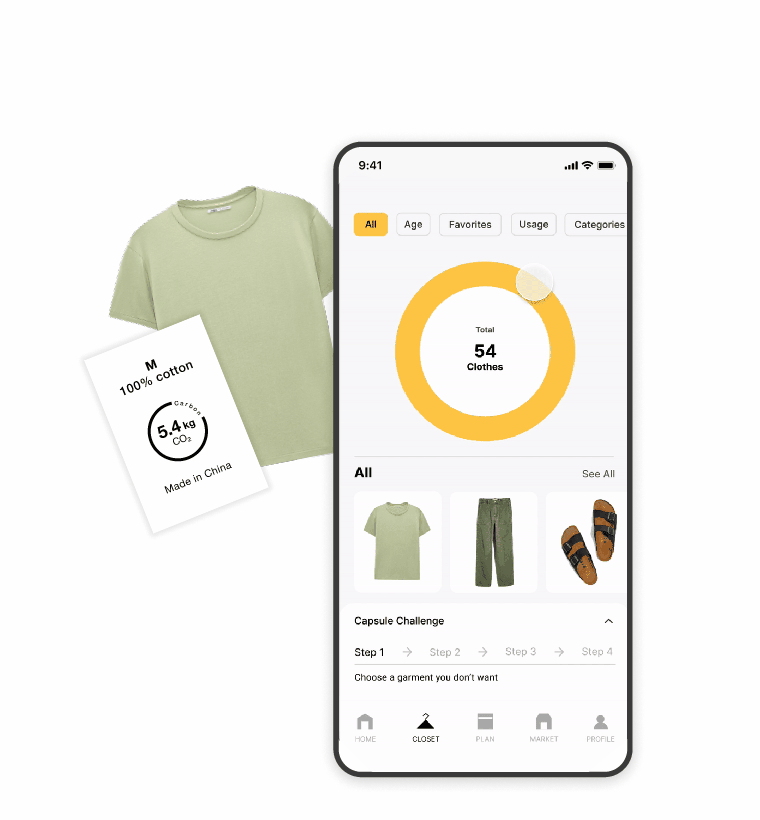
Mobile App
Closet Curator is an app that helps users organize, plan, and shop for clothes in an eco-friendly way. It tracks clothes usage, carbon footprint, and user preferences to curate style. Users can filter clothes by factors like age, usage patterns, and style match score. They can also exchange clothes with other members to reduce textile waste and promote a circular economy. The app also allows users to see the carbon footprint of their wardrobe, enabling them to make more informed and sustainable choices. Closet Curator is not just for fashion lovers but for anyone who wants to be more conscious about the environmental impact of their wardrobe choices.
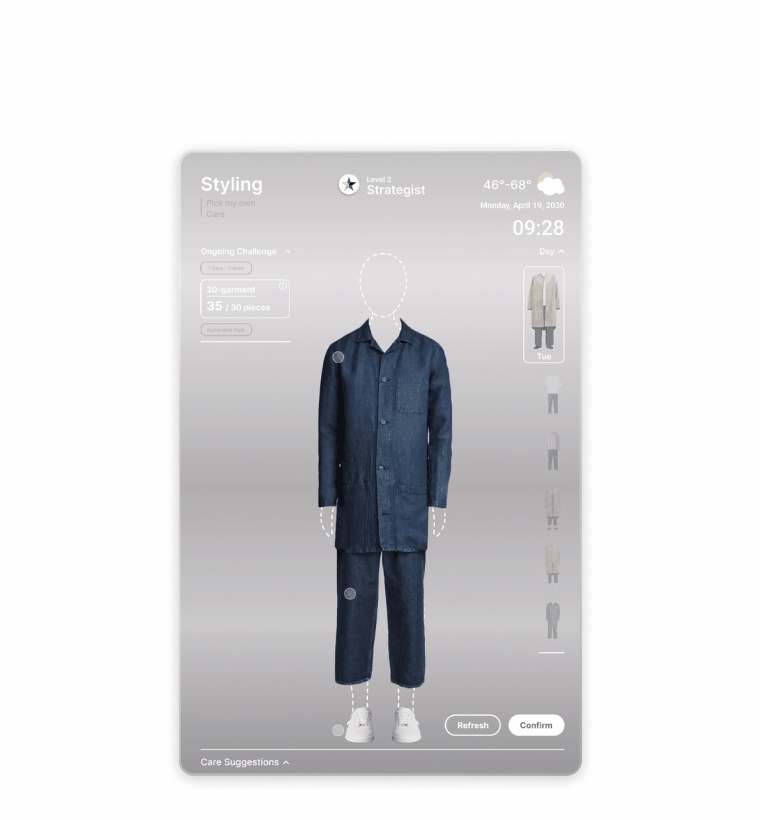
Mirror
The Smart Mirror suggests outfits that gives them styling suggestions and optimize usage of clothing to increase garment lifespan by making the most of what they own.
Challenge

The challenge system motivates people to learn how to reduce their clothing carbon footprint by taking steps towards individual offsets. The idea is to break wasteful habits by sponsoring challenges and social activities that offer:
-
User account status levels
-
Shopping discount rewards
-
Influence in context of social media

As a carbon user ranking, we have charted out 5 different levels, based on user’s carbon footprint of wardrobe - These are Explorer, Strategist, Trailblazer, Trendsetter, Superstar, started from level one to five. These ranks would encourage users to take further challenges, reduce carbon footprint and level up.
Marketplace
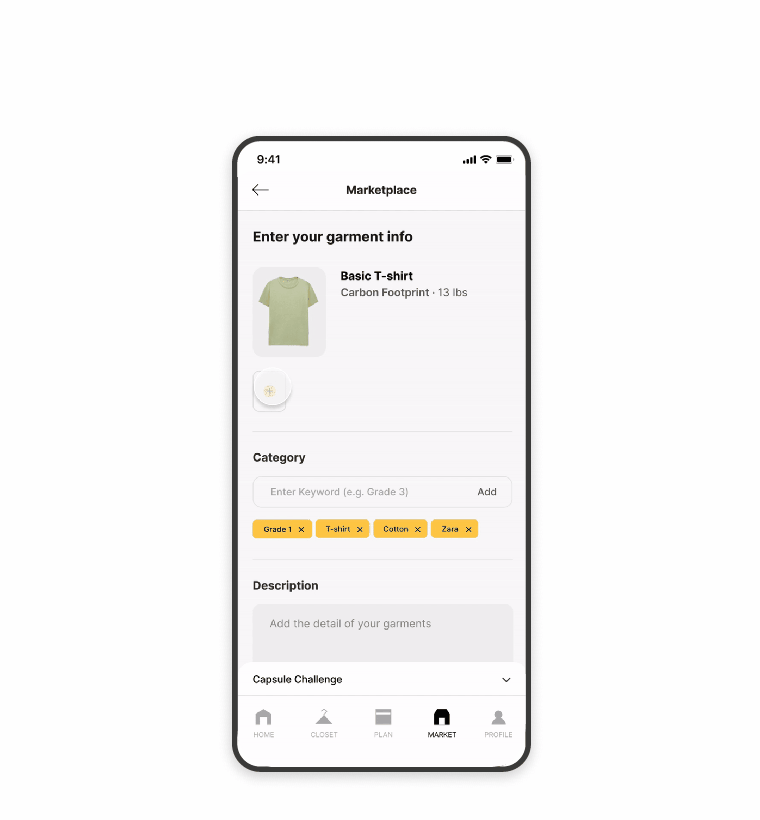
Marketplace which brings together a community of carbon conscious individuals interested in shopping, swapping and reselling secondhand clothes.
Here users can upload their own garments and add swap preferences.
While secondhand clothes have a significant impact on carbon reduction, at the same time, it also saves shoppers money.
Vision
We researched the past along with the present; we designed the present toward the future; we envisioned the future by offering possibilities.
We strategized the timeframe where each product would be released to the day-to-day lives based on the pace of evolution in society and people's mindset shift. In the future, simple and transparent reporting of garment data, including materials, manufacturing, origin, durability, and carbon emissions, will be pivotal in transforming wasteful consumer behaviors into sustainable consumer behaviors.
We envision a time when data could be stored in the garment itself, using existing NFC tag technology. The more information gathered about clothes; the more effective closet apps will be.
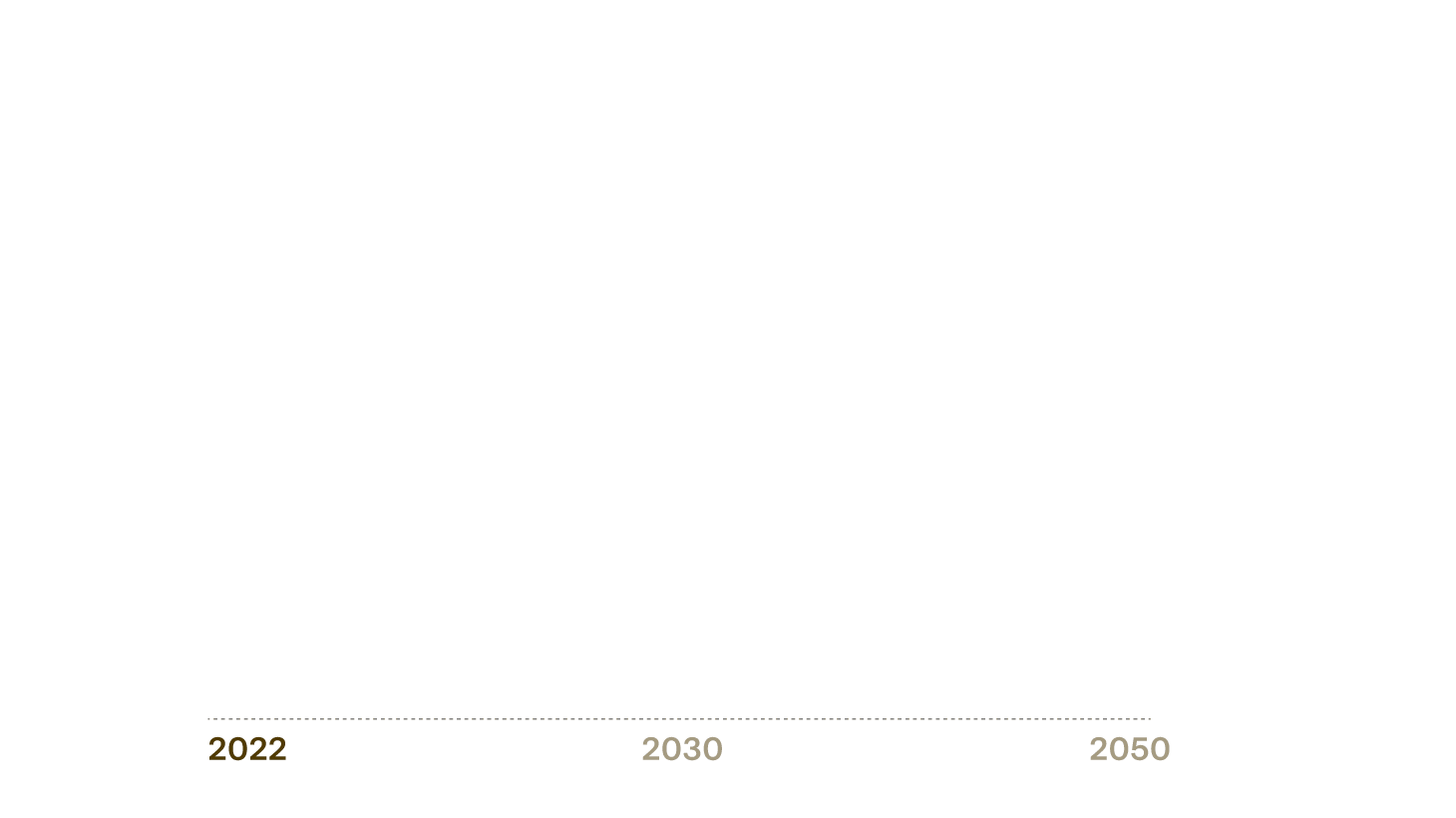
Today, estimating carbon emissions is a fairly complex, time-consuming process. The Life Cycle Assessment (LCA) tool is a prevailing methodology for assessing the environmental impact of commercial products like clothes across five phases from cradle to grave. We can look at the phases of the LCA framework to envision how the clothing industry could become carbon-neutral in the future. By extending the longevity of clothing to just 9 months, we can reduce its environmental impact (carbon, water, and waste) by 20-30%.
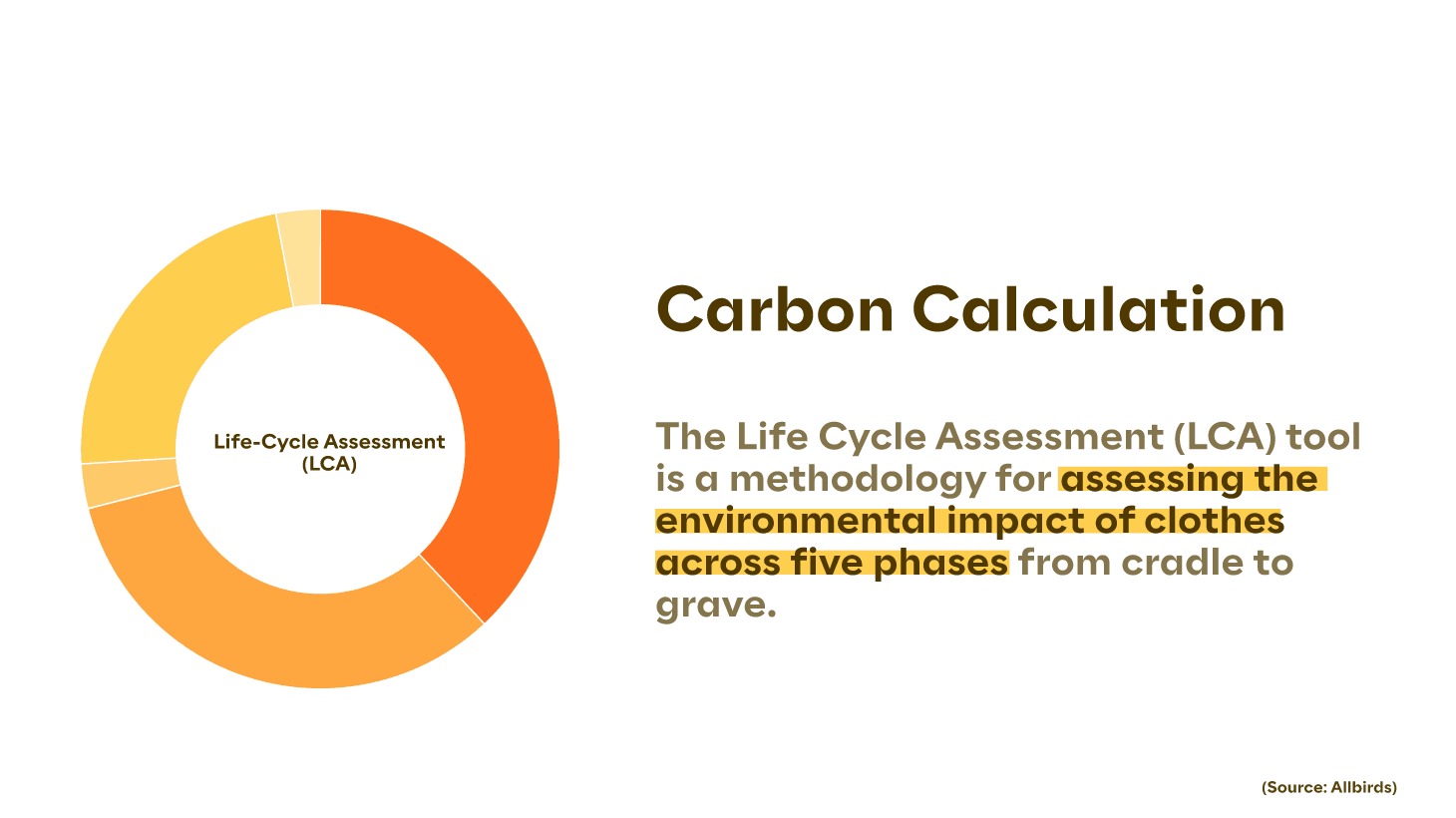
Research Process
We conducted a breadth of research methodologies that span from exploratory to validation.
Exploratory Research
We spent two weeks implementing several research methods to understand domain experts' contributions and Generation Z's point of views.

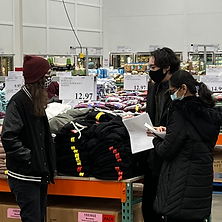

The insights we gathered from the synthesis can be sorted into four categories:
-
Style reflects identity
-
Purchase based on style and cost, discard based on quality
-
Seek approval and appreciation from social circle
-
Powerless by the bounds of profit and costs
We came up with the design principles in relation to each of the insights:
-
Style reflects identity
-
Embed sustainable fashion practices in one’s identity
-
-
Purchase based on style and cost, discard based on quality
-
Balance style and quality when shopping
-
-
Seek approval and appreciation from social circle
-
Make sustainability a trend in social context
-
-
Powerless by the bounds of profit and costs
-
Empower customers to effect change
-


Generative Research
We held three workshops over zoom meetings and Figma to ask participants to follow multiple tasks in order to evoke their thoughts and generate design ideas that we could incorporate into our next step.



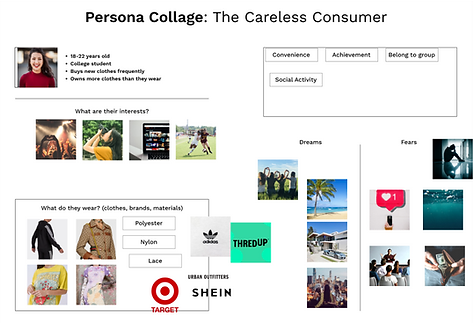

We got five findings according to the participants' ideas:

By incorporating the user's ideas, we came up with some early concepts along with user analysis.




Including creating personas of both conscious and careless types of customers, and journey maps of both the end user and the industry leader.
Including creating personas of both conscious and careless types of customers, and journey maps of both the end user and the industry leader.
Additionally, we built the blueprint to analyze our product regarding the relationship between the forefront and the background.


Evaluative Testing
Next, we built the testable prototypes, including the mobile app and the smart closet, in a physical manner. We received practical user feedback mostly about how the design fits into people's daily scenarios and settings, for example, meaningfully visualizing carbon footprint to users could help turn guilt into motivation.
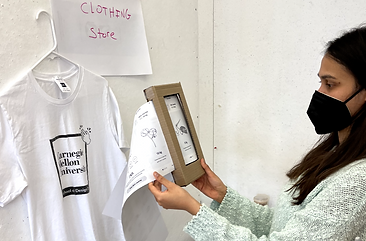



We refined the design and made it a high-fidelity prototype, including the mobile app and the smart mirror. Finally, we conducted the second user test to validate our ultimate outcomes by asking the participants to think aloud, sort cards, and associate words, after they experienced the using flow.
The feedback we received are:
-
Clarify visual hierarchy on app homepage
-
Don’t overload with information when performing tasks
-
Allow users to control how information is displayed
-
Make it easier for users to understand carbon numbers
-
Discount rewards are big incentive to complete challenges
-
Adding clothes to inventory must be easy

The most popular features are:
-
Clothing inventory and data analytics
-
Shopping guidance
-
Challenges/rewards Outfit planner
Given the needs raised by the users, we ended up further developing the three main features and putting stress on them for the live demo and our final presentation.
Live Demo
In the live demo, we built the smart mirror by using the monitor with a single-reflection material attached to the surface, mocking the interaction by manipulating the functionality through the laptop behind. We also set up a clothes shop, encouraging people to use the app to exchange garments and save their carbon footprints.
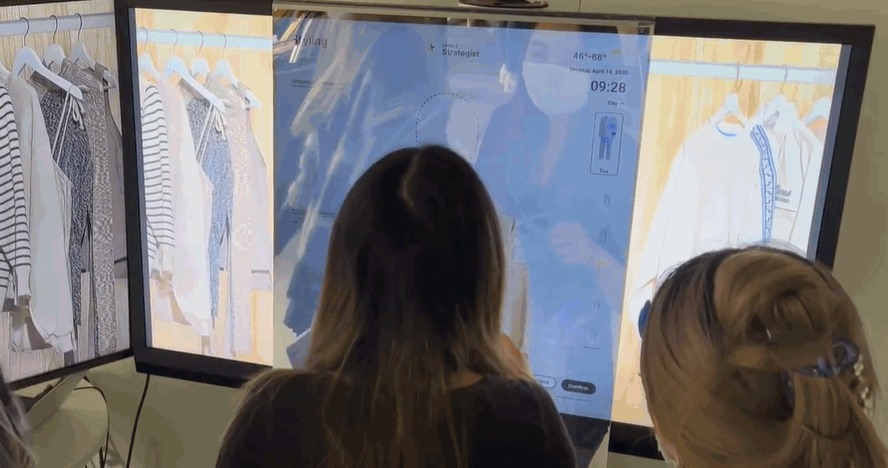


Learnings & Takeaways
Over the 12 weeks, this research project guided me from the beginning of preliminary research, mapping the research topic with the interest domain of each team member. In this phase, I learned how to determine a meaningful field that is impactful to society and how to communicate within a team when each of us has different focuses and things we care about.
The exploratory phase was the toughest time for me. I realized that I'm a goal-oriented practitioner. That is to say, exploring the problems by reviewing the literature, interviewing, and surveying made me feel uncertain as I didn't have a clear motivation to engage in the work. Yet, I explained my situation to the team, and my team was supportive during this stage. In the future, when I get a chance to do exploratory research, I will seek teamwork as a supporter role and provide my initial thought to the table in order to prompt others to task me.
With that being said, I'm absolutely confident in generating ideas when there is a clear problem pending to be solved. I was aware of that I'm capable of structuring the system by integrating the relationship between users, behaviors, and the bigger picture such as industry chain. With the framework, I could catch the possibilities to move forward. At the same time, when discussing design within the team, my critical thinking ability helped define whether our proposal was on the track solving the problem we framed. Moreover, the participatory workshop expanded my perspective since users might not have a design background that they came up with ideas, which could be rather practical that we can refer to some current technology or could be speculative that was not feasible in the present but provided insightful points for us to understand people's needs and desires.
Prototyping was another phase that I rather enjoyed as I see myself as a hands-on designer, and making things provides me a more solid understanding of whether the design is viable regarding the use scenarios and physical settings.
To sum up, through this opportunity, I not only experienced the breadth of research methodologies but also produced design products that had a working demo to manifest our intention to people. I learned where my shortages were and how I could improve them by working as a team, as well as my advantages that led the project to a better place.